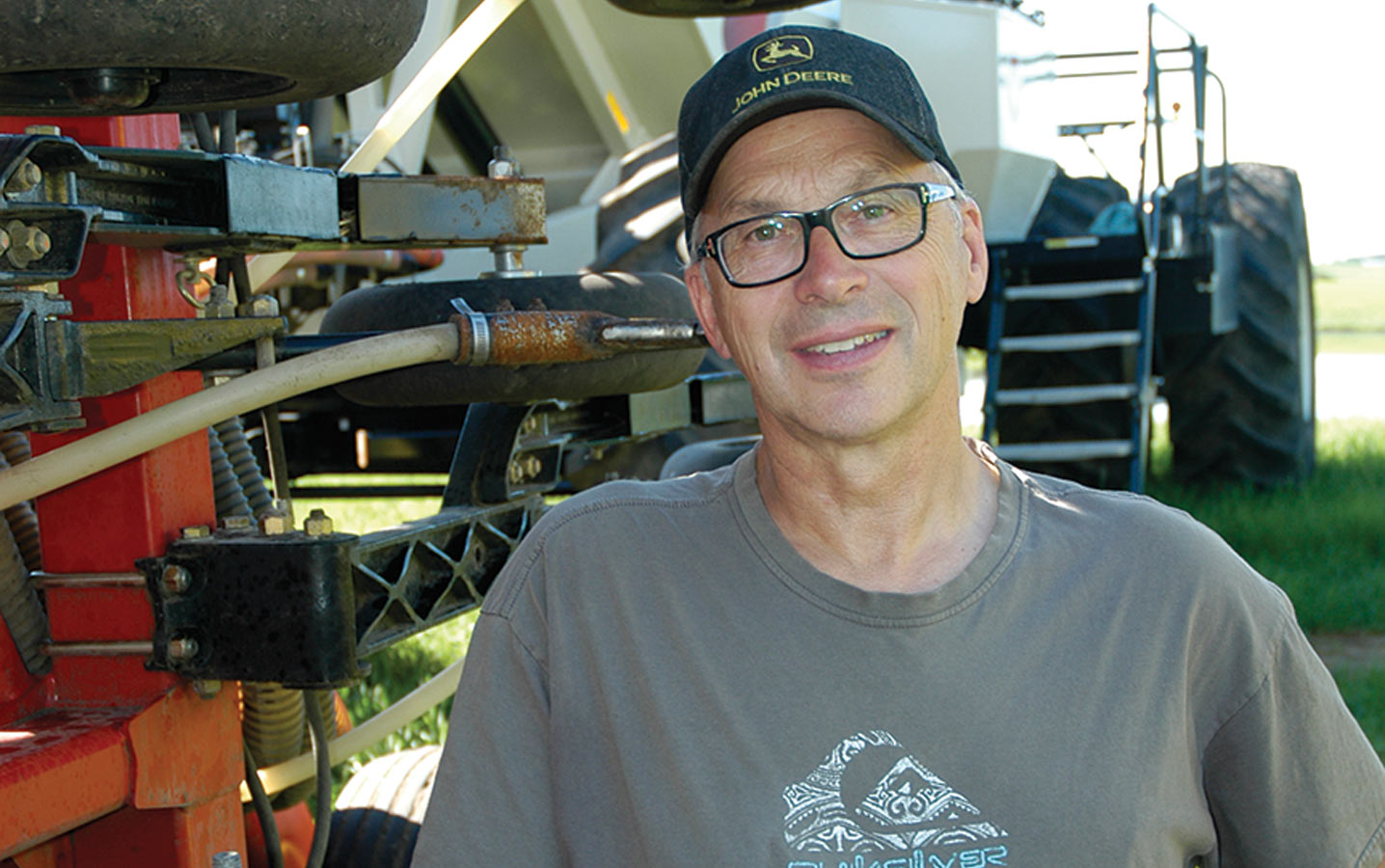Less seed-placed fertilizer means more seed survival
Cynthia Grant’s research summary for, “Improving nutrient management in canola and canola-based cropping systems,” is available at canolacouncil.org
Steve Shirtliffe’s report, “Determining the economic plant density in canola,” is posted in the Research section at saskcanola.com and was featured in the 2015 Canola Digest Science Edition, available at canoladigest.ca
Lee Erickson wanted to lower his canola seeding rate but his agronomist put the brakes on that idea.
“You’re only getting 50-60 per cent seed survival,” his agronomist said, factoring in seeding rate, thousand seed weight and the emerged stands. “You can’t lower the seeding rate without reducing plant stand below eight per square foot.”
This target aligns with Canola Council of Canada’s recommended stand of seven to 10 plants per square foot, a practice driven in large part by Steve Shirtliffe’s 2009 meta-analysis. The University of Saskatchewan researcher analyzed results from 35 canola seeding rate studies, and concluded that stands of fewer than five plants per square foot cannot reach the crop’s yield potential. Stands above this threshold have the plants needed to reach their yield potential.
Eight plants per square foot established in the spring allows for some plant loss to frost, insects or disease while still achieving the five plant minimum by harvest.
Driven by his low seed survival, Erickson, who farms at Donalda, Alta., discussed with his agronomist what could be done to fix this issue. They went through possible causes, including herbicide carryover damage, seed depth, seeding date and fertilizer rates, to see which was most likely on Erickson’s farm.
They finally identified the problem: Too much fertilizer in the seed row.
He had been putting 70 lb./ac. of monoammonium phosphate (MAP), equivalent to 30-35 lb./ac. of actual phosphate, and up to 70 lb./ac. of ammonium sulphate (AS) in the canola seed row. “It turns out this was really damaging our seed survival,” Erickson says.
Now he puts an “absolute maximum” of 20 lb./ac. of actual phosphate in the seed row and no sulphur. “We have seen a dramatic change in seed survival since we made this change three years ago,” he says. “We’re now getting 70-80 per cent seed survival on average, and maybe more this year.”
In her recent study showing how seed-placed fertilizer will reduce canola seed survival, Cynthia Grant, now retired from Agriculture and Agri-Food Canada, found that while MAP alone can decrease canola stand density, the effect is much greater when AS is added in the seed row. Canola stand density at a base rate of 20 lb./ac. of phosphate (40 lb./ac. MAP) drops by around 30 per cent when AS is added at 70 lb./ac. Even MAP alone can reduce seed survival. In Grant’s study, stand density with 40 lb./ac. of phosphate in the seed row was
20 per cent lower than with no fertilizer in the seed row.
Erickson currently has two different drills. He has a Bourgault Model 3320 QDA (quick depth adjustment) with mid row banders bought so he could apply dry fertilizer at the time of seeding. And he has a John Deere 1910 with ConservaPak paired-row openers that can apply NH3. He bought the John Deere for its sectional control. In his area, he calculated that 11.8 per cent of area he covers with his seeders each year are overlaps. He wanted to stop this waste of inputs. Both drills do a good job of seeding canola, he says.
He aims for one-inch average seed depth for canola, and to ensure this, he will not seed faster than 4.8 mph. “As soon as we hit 5 mph, the drill starts throwing more soil,” he says. “We’re no-tillers, so we have lots of residue coverage to work through, and at speeds over five mph, things don’t work the way they should.”
These steps, including reduced seed-placed fertilizer, are all part of his goal to get canola off to a good start. “If your canola doesn’t start well, you’re not getting the 50-60 bu./ac. yields,” he says.





